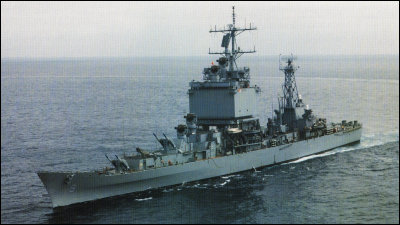The US Navy is developing a "submarine charging station" that can generate electricity at the seabed and charge underwater drone

In order to let UUV (Unmanned Underwater Vehicle) to dive in the ocean unnoticedly perform a mission, it is necessary to charge the battery in a state that it can dip in the sea without coming back to the sea surface. It seems that the US Navy is putting the introduction of the station into view. This charging station can not only supply power to UUV automatically, even if there is no external operation, research and development is proceeding to supply energy to the unmanned submersible by obtaining energy from hydrothermal vents on the seafloor.
The US Navy Wants Undersea Gas Stations for Underwater Drones - Motherboard
https://motherboard.vice.com/en_us/article/qvxmv3/the-us-navy-wants-undersea-gas-stations-for-underwater-drones
This technology is being developed by a submarine ship development company group based in CaliforniaTeledyne Marineis. The company can autonomously navigate underwaterGavia AUVIt is also a company developing Autonomous Underwater Vehicles, a submarine charging station as a facility for enabling continuous navigation of this Gavia AUV at the Naval Association Maritime Aerospace Exhibition held in April 2018 "Navy League Sea Air Space ExpositionWe announced at.
According to Teledyne's announcement, the submarine charging station can store up to 200 kilowatts of electricity and can operate in an environment with a depth of about 10,000 feet (about 3,200 meters). Gavia AUV automatically connects to this charging station and charges a 1.2-kilowatt lithium-ion battery. With one charge, Gavia AUV can operate for up to 5 hours.

The Gavia AUV can sail at maximum 5.5 knots (about 10 km / h) and the maximum dive depth is about 10,000 feet (about 3,200 meters), the same as the charging station. It is also used for research purposes such as marine survey and seabed survey, exploration and rescue activities of sunken vessels, and survey and exploration of undersea resources. In addition, the use of military purposes is also under consideration by installing high-performance sensors and the like, and the US Navy has purchased Gavia AUV for $ 150,000 (about 17 million yen at that rate) in 2003 And that.
The "Naval Research Bureau" belonging to the Navy launched the research program "Persistent Renewable Energy for Undersea Systems" (permanent renewable energy in the underwater system) in 2016 and gained energy from hydrothermal vents on the seafloor We are promoting R & D on technology to supply electric power to unmanned submersibles. In the same year, the US Navy has announced a policy to set up a submarine power plant by 2025 to the US Congress, and to use it for the purpose of "manned vessels can not be implemented or can not be performed" I am studying.

BySergio Carvalho
Related Posts:
in Hardware, Posted by darkhorse_log







